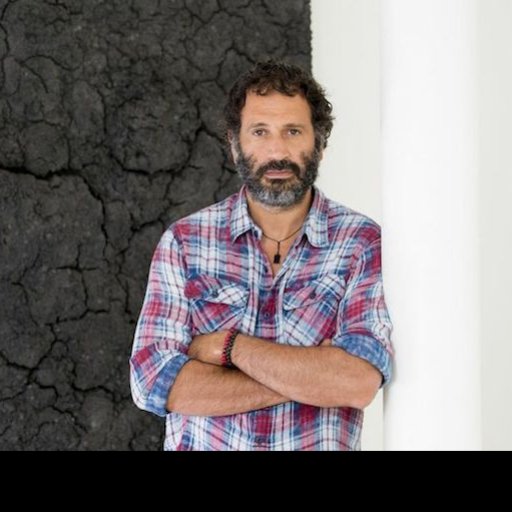Bosco Sodi
Bosco Sodi’s instantly recognizable paintings are characterized by thick, textured surfaces. These canvases are abstract in nature, but their cracked faces vividly call to mind arid earth, an effect Sodi achieves by applying mixtures of crude materials to canvas. Slight variations in the quantities of these raw substances—pure pigment, sawdust, wood pulp, natural fibers, glue, and water—can have definitive effects on the resulting works. The amount of cracking, for instance, depends on how much water is added. Likewise, the environment in which the work is realized can have substantial effects on the finished piece. Sodi maintains multiple studios, in Barcelona, Berlin, New York, and his native Mexico City, and he embraces the different outcomes that occur in each of these locations, which are consequence of variable pigments, water constituents, and the like; in this way, Sodi’s paintings can be understood as site-specific.
While these works range in size and shape, they are collectively influenced by Art Informel, a Parisian counterpart of Abstract Expressionism, as well as individual artists such as Antoni Tàpies, Jean Dubuffet, Willem de Kooning, and Mark Rothko. Regarding the latter in particular, Sodi’s large-scale paintings impart similar engulfing, spiritual qualities, also by way of enormous color fields. …
Bosco Sodi’s instantly recognizable paintings are characterized by thick, textured surfaces. These canvases are abstract in nature, but their cracked faces vividly call to mind arid earth, an effect Sodi achieves by applying mixtures of crude materials to canvas. Slight variations in the quantities of these raw substances—pure pigment, sawdust, wood pulp, natural fibers, glue, and water—can have definitive effects on the resulting works. The amount of cracking, for instance, depends on how much water is added. Likewise, the environment in which the work is realized can have substantial effects on the finished piece. Sodi maintains multiple studios, in Barcelona, Berlin, New York, and his native Mexico City, and he embraces the different outcomes that occur in each of these locations, which are consequence of variable pigments, water constituents, and the like; in this way, Sodi’s paintings can be understood as site-specific.
While these works range in size and shape, they are collectively influenced by Art Informel, a Parisian counterpart of Abstract Expressionism, as well as individual artists such as Antoni Tàpies, Jean Dubuffet, Willem de Kooning, and Mark Rothko. Regarding the latter in particular, Sodi’s large-scale paintings impart similar engulfing, spiritual qualities, also by way of enormous color fields.
Sodi was born in 1970, in Mexico City. His work has been exhibited extensively since the early aughts, notably at the Bronx Museum in New York and in Spain at the IVAM Museum.
De la Cruz Collection, Miami, FL
Francisco Godia Foundation, Barcelona, Spain
Fundación/Colección Jumex, Ecatepec, Mexico
Museo Internazionale delle Arte Aplicada Oggi, Turin, Italy
Pace Gallery, New York, NY
Galeria Carles Tache, Barcelona, Spain
Galeria Alvaro Alcazar, Madrid, Spain
Galeria Hilario Galguera, Mexico City, Mexico





